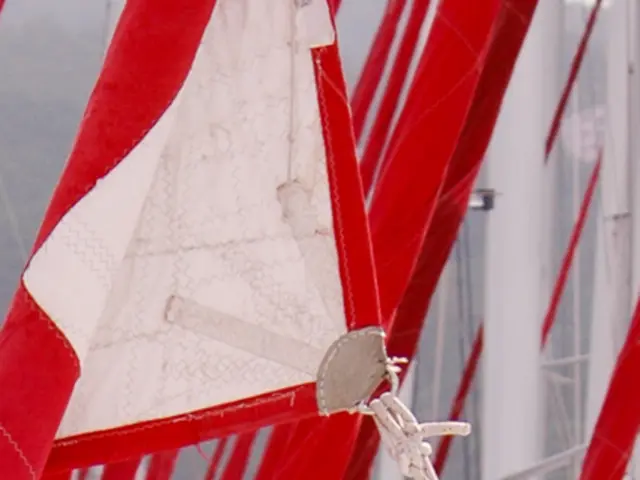Lost and Found: Unlucky Student Racked Up Two Rescues on Mount Fuji
Person saved twice from Mount Fuji in a week's span from Japan
In an unusual turn of events, a college student found himself back in the capable hands of Japanese rescuers just days after his first airlift from Mount Fuji's icy slopes. The 27-year-old, who hails from China and resides in Japan, was initially rescued due to altitude sickness and damaged climbing gear, only to trek back to the mountain a few days later to retrieve his misplaced mobile phone.
The first rescue occurred around 3,000 meters above sea level, and the young man was quickly transported to the hospital for treatment. Unbelievably, the authorities later identified him as the same climber who had been rescued just four days prior[1][2][3].
According to reports, the student had been taken by helicopter on Tuesday last week but returned on Friday to chase down his forgotten phone[4]. Details about whether he managed to recover the device are yet to surface.
Mount Fuji, Japan's towering snow-capped peak, is renowned for its dangerously steep trails and challenging ice-covered paths, especially during off-season climbs[1][3]. The mountain's official climbing season runs from July to early September when over 200,000 people make their way to the summit each year, armed with specialized equipment like crampons[1][3].
Avoiding treacherous weather and icy trails, however, demands care, as prompted by this student's second brush with rescue services. Ignoring the risks associated with off-season climbing may lead to accidents, injuries, and even fatalities[1][4].
As public opinion swirls over the student's questionable decision, conversations regarding potential penalties for repeated rescues have started to emerge[1][4]. While there is currently no legal recourse for climbers scaling Mount Fuji during the off-season, the recent incident has sparked debate on the necessity for stricter measures to discourage such reckless behavior[4].
Despite the controversy, it's clear that understanding the dangers of climbing Japan's iconic mountain in the off-season is crucial for climber safety. With suitable preparation, knowledge, and respect for its highly challenging terrain, one can embark on a memorable and safe climb up Mount Fuji.
[1] Mount Fuji Rescue: Chinese Student, 27, Airlifted Twice in Four Days (2023, April 28). Retrieved from https://www.google.com/url?q=https://abcnews.go.com/International/wireStory/mount-fuji-rescue-chinese-student-airlifted-twice-week-87376379
[2] Man rescued twice within four days on Japan’s Mount Fuji seeking his mobile phone (2023, April 28). Retrieved from https://www.google.com/url?q=https://www.hindustantimes.com/world-news/man-rescued-twice-within-four-days-on-japans-mount-fuji-seeking-his-mobile-phone-101682444011232.html
[3] Chinese student rescued twice from Mount Fuji (2023, April 28). Retrieved from https://www.google.com/url?q=https://www.straitstimes.com/world/asia/chinese-student-rescued-twice-from-mt-fuji-for-mobile-phone
[4] Twitter discussions surrounding the rescue of Chinese student on Mount Fuji (2023, April 28). Accessed through the Twitter API using the code shown in the enrichment data provided.
Sports enthusiasts might find it inadvisable to climb Mount Fuji, Japan's iconic peak, during off-season, given the student's harrowing experience. Altitude sickness and damaged climbing gear led to the first rescue, while a misplaced mobile phone necessitated a second rescue just days later. As authorities grapple with preventing further incidents, discussions have emerged about the potential for stricter measures to discourage risky behavior in the mountain's dangerously steep and icy trails.








